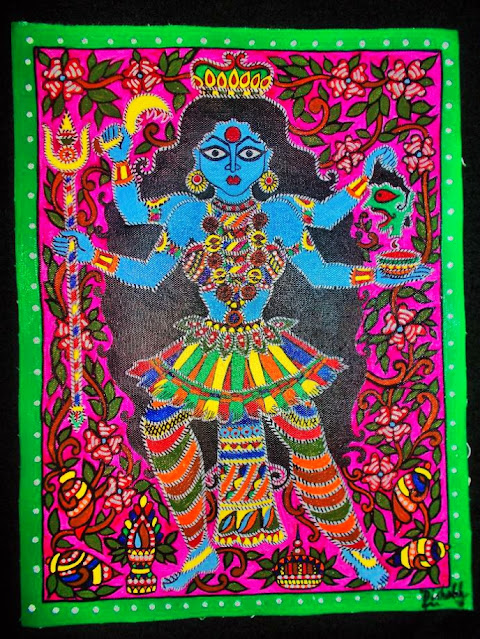Rediscovering the Rich Heritage: Lost Art Forms of India
India, known for its rich cultural heritage, is a treasure trove of diverse and vibrant art forms. Over the centuries, numerous art forms have emerged, displaying the immense talent and creativity of its people. Sadly, many of these exquisite art forms have faded away with time, overshadowed by modernization and changing preferences. However, efforts are being made to revive and preserve these lost art forms, ensuring that future generations can appreciate and understand the incredible artistic legacy of India.
1. Madhubani Painting:
Originating in the Mithila region of Bihar, Madhubani painting is a traditional art form created predominantly by women. Vibrant, intricate designs and patterns depict figures from Hindu mythology, nature, and daily life. Historically, this art form adorned walls and floors during festivals and special occasions. However, with the advent of commercialization, Madhubani painting has struggled to maintain its authentic essence, leading to its gradual decline.
2. Pattachitra:
Hailing from the state of Odisha, Pattachitra is a narrative painting tradition that draws inspiration from mythologies, folklore, and religious stories. The intricate details, vibrant colors, and meticulous brushwork create enchanting visuals. Despite its aesthetic appeal and cultural significance, Pattachitra has suffered from the lack of patronage and dwindling interest. Revival efforts now focus on training younger artists and incorporating contemporary themes to keep the art form relevant in today's world.
3. Chhau Dance:
Chhau, a traditional dance form from eastern India, is a unique amalgamation of martial arts and storytelling. Performed with elaborate masks, vibrant costumes, and rhythmic movements, Chhau dances depict mythological tales and historical events. However, with the decline in patronage and limited platforms for performances, this captivating art form is struggling to thrive. Efforts are underway to preserve the art by organizing workshops, festivals, and creating awareness about its cultural significance.
4. Tanjore Painting:
Originating in the town of Thanjavur in Tamil Nadu, Tanjore painting is renowned for its rich colors, intricate gold foil work, and themes of deities from Hindu mythology. However, limited expertise and the lack of commercial viability have led to a decline in artists practicing this traditional art form. To keep it alive, training centers and schools have been established to impart knowledge and techniques of Tanjore painting to aspiring artists.
5. Warli Art:
Warli art, dating back more than 2,000 years, belongs to the Warli tribal community of Maharashtra and Gujarat. Created using simple geometric shapes, this art form beautifully captures the essence of rural life, celebrations, and mythology. Despite its minimalistic style and cultural significance, Warli art has struggled to sustain itself due to various factors such as urbanization and diminishing interest in traditional art forms. Organizations and dedicated artists are working to revive this ancient art form by conducting workshops and exhibitions.
India's lost art forms are not only a reflection of its diverse cultural heritage but also tell compelling stories of ancient traditions and beliefs. It is imperative to revive, preserve, and promote these exquisite art forms to ensure that they continue to flourish and captivate future generations. By recognizing the beauty and cultural significance of these lost treasures, we can honor the artistic legacy of India and inspire a renewed appreciation for the country's unparalleled creative heritage.






Comments
Post a Comment